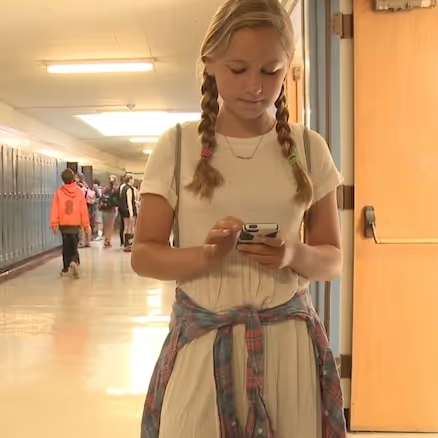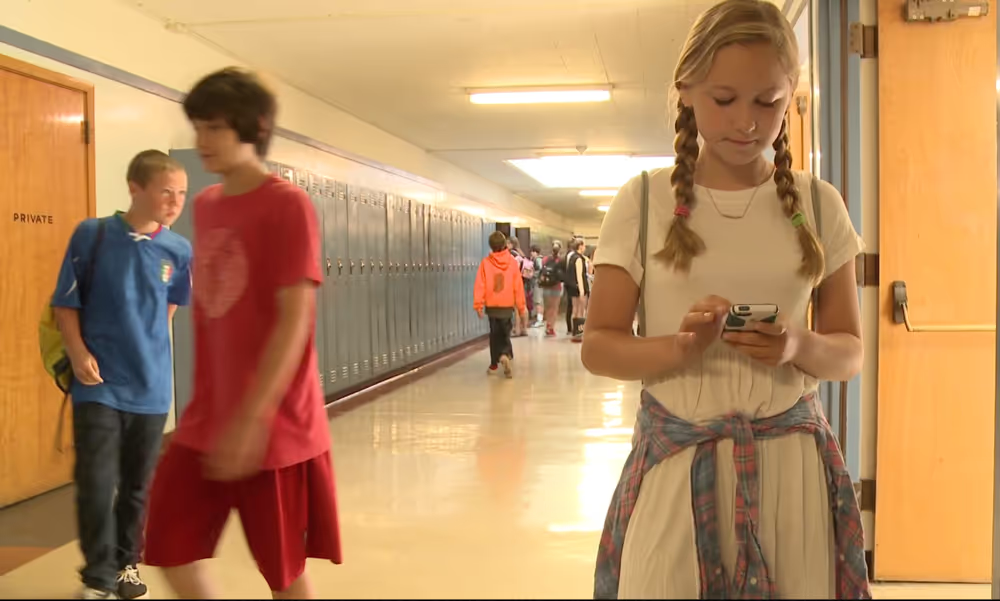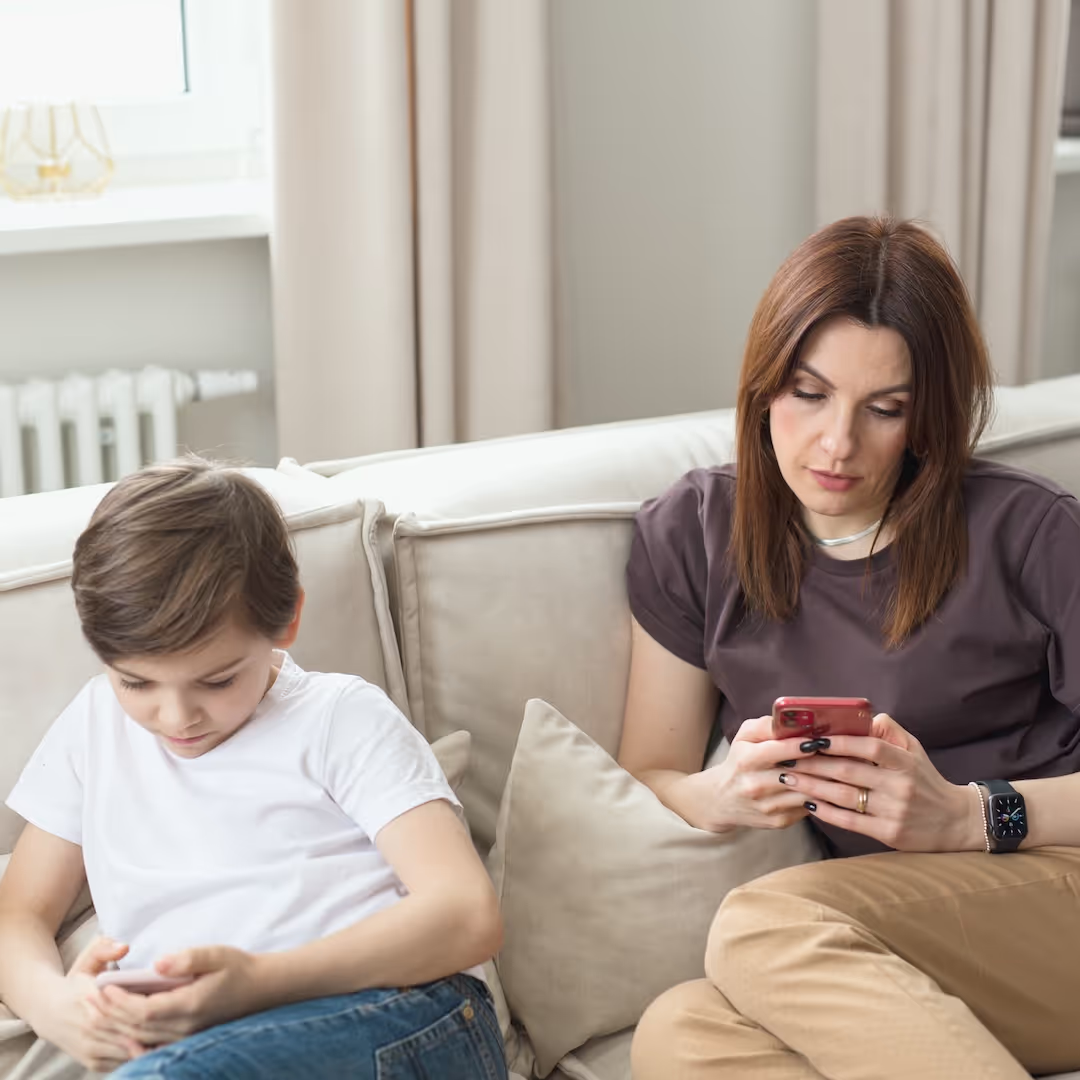



It is very common for teens to have two Instagram accounts or even three or four. Their main, public-facing one is referred to as their Rinsta (as in Real + Instagram). Their second account is called their Finsta (Fake + Instagram) and is in addition to their main account. Teens use their Finsta as a place to post pictures and videos meant only for their closest friends to see.
Since teens’ main accounts generally have a lot more people following them, including adults, the posts on them are curated whereas Finstas offer teens a place to be themselves and post unfiltered content. And sometimes a place to hide things from their parents.
I talked to a 14-year old named Isabel who has a Rinsta and a Finsta. She tells me that she uses her Finsta daily to vent to her closest friends. Her main Instagram account only has a few well-composed photos on it. While her Rinsta has over 1,000 followers, her Finsta only has 64.
Isabel says that she posts things to her Finsta that she thinks her friends might find funny or relatable. But some teens also use their Finsta accounts to express deep emotional feelings. I’ve heard stories of middle-schoolers posting something that made their friends concerned, like signs of a possible eating disorder or clinical depression.
How do we give teens privacy and autonomy while at the same time knowing that they may be posting to reach out for emotional support around something that we adults need to know about? We want them to express themselves but, of course, we worry about what they express and to whom. And we know that, when hard emotions are happening, hiding behind a screen can be easier than dealing directly. It is key that our teens reach out face-to-face when things are hard. Social media and the Internet can allow an adolescent to isolate themselves which will likely exacerbate their sad feelings.
This is where having regular conversations with your teen is key, so that when something is really wrong they will come to you. Recently I heard from my friend about how happy she was that when she recently spoke with a group of middle schoolers about that issue, they all seemed to understand that if they felt that their friend was in danger of hurting themselves or someone else, that they should contact an adult.
Here are are few questions for your kids and teens to get the conversation going today:
We would love for you to share this TTT any way that works for you, whether that’s on social media or via a newsletter. If you want to send it out in your newsletter we just ask that you credit us and link to our website, and let us know at lisa@screenagersmovie.com.
HOST A SCREENING to help spark change.
FIND EVENT LISTINGS
Do you organize professional development in schools? We now have a 6-hour, 3-part training module. Request more information here Professional Development.
Stay in touch with the Screenagers community on Facebook, Twitter and leave comments below.
July 22, 2019
As well as our weekly blog, we publish videos like this one every week on the Screenagers YouTube channel
Learn more about showing our movies in your school or community!
Join Screenagers filmmaker Delaney Ruston MD for our latest Podcast

Learn more about our Screen-Free Sleep campaign at the website!
Our movie made for parents and educators of younger kids
Learn more about showing our movies in your school or community!
Learn more about showing our movies in your school or community!
Join Screenagers filmmaker Delaney Ruston MD for our latest Podcast

Learn more about our Screen-Free Sleep campaign at the website!
Our movie made for parents and educators of younger kids
Join Screenagers filmmaker Delaney Ruston MD for our latest Podcast
As we’re about to celebrate 10 years of Screenagers, we want to hear what’s been most helpful and what you’d like to see next.
Please click here to share your thoughts with us in our community survey. It only takes 5–10 minutes, and everyone who completes it will be entered to win one of five $50 Amazon vouchers.

It is very common for teens to have two Instagram accounts or even three or four. Their main, public-facing one is referred to as their Rinsta (as in Real + Instagram). Their second account is called their Finsta (Fake + Instagram) and is in addition to their main account. Teens use their Finsta as a place to post pictures and videos meant only for their closest friends to see.
Since teens’ main accounts generally have a lot more people following them, including adults, the posts on them are curated whereas Finstas offer teens a place to be themselves and post unfiltered content. And sometimes a place to hide things from their parents.
I talked to a 14-year old named Isabel who has a Rinsta and a Finsta. She tells me that she uses her Finsta daily to vent to her closest friends. Her main Instagram account only has a few well-composed photos on it. While her Rinsta has over 1,000 followers, her Finsta only has 64.
Isabel says that she posts things to her Finsta that she thinks her friends might find funny or relatable. But some teens also use their Finsta accounts to express deep emotional feelings. I’ve heard stories of middle-schoolers posting something that made their friends concerned, like signs of a possible eating disorder or clinical depression.
How do we give teens privacy and autonomy while at the same time knowing that they may be posting to reach out for emotional support around something that we adults need to know about? We want them to express themselves but, of course, we worry about what they express and to whom. And we know that, when hard emotions are happening, hiding behind a screen can be easier than dealing directly. It is key that our teens reach out face-to-face when things are hard. Social media and the Internet can allow an adolescent to isolate themselves which will likely exacerbate their sad feelings.
This is where having regular conversations with your teen is key, so that when something is really wrong they will come to you. Recently I heard from my friend about how happy she was that when she recently spoke with a group of middle schoolers about that issue, they all seemed to understand that if they felt that their friend was in danger of hurting themselves or someone else, that they should contact an adult.
Here are are few questions for your kids and teens to get the conversation going today:
We would love for you to share this TTT any way that works for you, whether that’s on social media or via a newsletter. If you want to send it out in your newsletter we just ask that you credit us and link to our website, and let us know at lisa@screenagersmovie.com.
HOST A SCREENING to help spark change.
FIND EVENT LISTINGS
Do you organize professional development in schools? We now have a 6-hour, 3-part training module. Request more information here Professional Development.
Stay in touch with the Screenagers community on Facebook, Twitter and leave comments below.
July 22, 2019
As well as our weekly blog, we publish videos like this one every week on the Screenagers YouTube channel
Sign up here to receive the weekly Tech Talk Tuesdays newsletter from Screenagers filmmaker Delaney Ruston MD.
We respect your privacy.

It is very common for teens to have two Instagram accounts or even three or four. Their main, public-facing one is referred to as their Rinsta (as in Real + Instagram). Their second account is called their Finsta (Fake + Instagram) and is in addition to their main account. Teens use their Finsta as a place to post pictures and videos meant only for their closest friends to see.
Since teens’ main accounts generally have a lot more people following them, including adults, the posts on them are curated whereas Finstas offer teens a place to be themselves and post unfiltered content. And sometimes a place to hide things from their parents.
I talked to a 14-year old named Isabel who has a Rinsta and a Finsta. She tells me that she uses her Finsta daily to vent to her closest friends. Her main Instagram account only has a few well-composed photos on it. While her Rinsta has over 1,000 followers, her Finsta only has 64.
Isabel says that she posts things to her Finsta that she thinks her friends might find funny or relatable. But some teens also use their Finsta accounts to express deep emotional feelings. I’ve heard stories of middle-schoolers posting something that made their friends concerned, like signs of a possible eating disorder or clinical depression.
How do we give teens privacy and autonomy while at the same time knowing that they may be posting to reach out for emotional support around something that we adults need to know about? We want them to express themselves but, of course, we worry about what they express and to whom. And we know that, when hard emotions are happening, hiding behind a screen can be easier than dealing directly. It is key that our teens reach out face-to-face when things are hard. Social media and the Internet can allow an adolescent to isolate themselves which will likely exacerbate their sad feelings.
This is where having regular conversations with your teen is key, so that when something is really wrong they will come to you. Recently I heard from my friend about how happy she was that when she recently spoke with a group of middle schoolers about that issue, they all seemed to understand that if they felt that their friend was in danger of hurting themselves or someone else, that they should contact an adult.
Here are are few questions for your kids and teens to get the conversation going today:
We would love for you to share this TTT any way that works for you, whether that’s on social media or via a newsletter. If you want to send it out in your newsletter we just ask that you credit us and link to our website, and let us know at lisa@screenagersmovie.com.
HOST A SCREENING to help spark change.
FIND EVENT LISTINGS
Do you organize professional development in schools? We now have a 6-hour, 3-part training module. Request more information here Professional Development.
Stay in touch with the Screenagers community on Facebook, Twitter and leave comments below.
July 22, 2019
As well as our weekly blog, we publish videos like this one every week on the Screenagers YouTube channel

It feels like we’re finally hitting a tipping point. The harms from social media in young people’s lives have been building for far too long, and bold solutions can’t wait any longer. That’s why what just happened in Australia is extremely exciting. Their new nationwide move marks one of the biggest attempts yet to protect kids online. And as we released a new podcast episode yesterday featuring a mother who lost her 14-year-old son after a tragic connection made through social media, I couldn’t help but think: this is exactly the kind of real-world action families have been desperate for. In today’s blog, I share five key things to understand about what Australia is doing because it’s big, it’s controversial, and it might just spark global change.
READ MORE >
I hear from so many parents who feel conflicted about their own phone habits when it comes to modeling healthy use for their kids. They’ll say, “I tell my kids to get off their screens, but then I’m on mine all the time.” Today I introduce two moms who are taking on my One Small Change Challenge and share how you can try it too.
READ MORE >
This week’s blog explores how influencers and social media promoting so-called “Healthy” ideals — from food rules to fitness fads — can quietly lead young people toward disordered eating. Featuring insights from Dr. Jennifer Gaudiani, a leading expert on eating disorders, we unpack how to spot harmful messages and start honest conversations with kids about wellness, body image, and what “healthy” really means.
READ MORE >for more like this, DR. DELANEY RUSTON'S NEW BOOK, PARENTING IN THE SCREEN AGE, IS THE DEFINITIVE GUIDE FOR TODAY’S PARENTS. WITH INSIGHTS ON SCREEN TIME FROM RESEARCHERS, INPUT FROM KIDS & TEENS, THIS BOOK IS PACKED WITH SOLUTIONS FOR HOW TO START AND SUSTAIN PRODUCTIVE FAMILY TALKS ABOUT TECHNOLOGY AND IT’S IMPACT ON OUR MENTAL WELLBEING.
